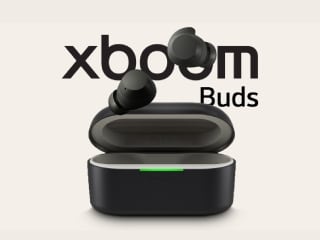Microsoft Demonstrates 'First Fully Automated DNA Data Storage'

Photo Credit: Microsoft
The innovation is being regarded as a key step in taking the technology to commercial sector
Tech major Microsoft has successfully developed an end-to-end automated DNA storage device that can translate digital information into DNA and back to bits, the company said in a blog post.
The fully automated system to store and retrieve data in manufactured DNA is a key step in moving the technology out of the research lab and into commercial datacenters.
The novel system, developed in partnership with University of Washington, translated "HELLO" into DNA and converted it back to digital data in just 21 hours, reported the paper published in Nature Scientific Reports journal.
"Our ultimate goal is to put a system into production that, to the end user, looks very much like any other cloud storage service -- bits are sent to a data center and stored there and then they just appear when the customer wants them," Karin Strauss, principal researcher at Microsoft, wrote in the post on Thursday.
"To do that, we needed to prove that this is practical from an automation perspective," Strauss added.
The system has so far stored one gigabyte of data in DNA, which includes cat photographs, great literary works, pop videos as well as archival recordings in DNA, which could be retrieved without errors, the researchers said.
The automated DNA data storage system uses software that converts the ones and zeros of digital data into the As, Ts, Cs and Gs that make up the building blocks of DNA.
Then it uses cheap lab equipments to flow the necessary liquids and chemicals into a synthesiser that builds manufactured snippets of DNA and to push them into a storage vessel.
When the system needs to retrieve the information, it adds other chemicals to properly prepare the DNA and uses microfluidic pumps to push the liquids into other parts of the system that "read" the DNA sequences and convert it back to information that a computer can understand.
Information is stored in synthetic DNA molecules created in a lab, not DNA from humans or other living things, and can be encrypted before it is sent to the system.
Further, the team also developed techniques to search for and retrieve only images that contain an apple or a green bicycle -- using the molecules themselves and without having to convert the files back into a digital format.
"We are definitely seeing a new kind of computer system being born here where you are using molecules to store data and electronics for control and processing. Putting them together holds some really interesting possibilities for the future," said Luis Ceze, Professor at the varsity.
For the latest tech news and reviews, follow Gadgets 360 on X, Facebook, WhatsApp, Threads and Google News. For the latest videos on gadgets and tech, subscribe to our YouTube channel. If you want to know everything about top influencers, follow our in-house Who'sThat360 on Instagram and YouTube.
Related Stories
- Samsung Galaxy Unpacked 2025
- ChatGPT
- Redmi Note 14 Pro+
- iPhone 16
- Apple Vision Pro
- Oneplus 12
- OnePlus Nord CE 3 Lite 5G
- iPhone 13
- Xiaomi 14 Pro
- Oppo Find N3
- Tecno Spark Go (2023)
- Realme V30
- Best Phones Under 25000
- Samsung Galaxy S24 Series
- Cryptocurrency
- iQoo 12
- Samsung Galaxy S24 Ultra
- Giottus
- Samsung Galaxy Z Flip 5
- Apple 'Scary Fast'
- Housefull 5
- GoPro Hero 12 Black Review
- Invincible Season 2
- JioGlass
- HD Ready TV
- Laptop Under 50000
- Smartwatch Under 10000
- Latest Mobile Phones
- Compare Phones
- Honor GT
- Acer Super ZX Pro
- Acer Super ZX
- Motorola Edge 60 Stylus
- Samsung Galaxy XCover 7 Pro
- Moto G Stylus (2025)
- Oppo Find X8s+
- Oppo Find X8s
- HP OmniBook Ultra 14
- Asus Vivobook 16 (AMD, 2025)
- Samsung Galaxy Tab Active 5 Pro
- Oppo Pad 4 Pro
- Oppo Watch X2 Mini
- Garmin Instinct 3 Solar
- Xiaomi X Pro QLED 2025 (43-Inch)
- Xiaomi X Pro QLED 2025 (55-Inch)
- Nintendo Switch 2
- Sony PlayStation 5 Pro
- Whirlpool 1.5 Ton 3 Star Inverter Split AC (SAI18K38DC0)
- Whirlpool 1.5 Ton 5 Star Inverter Split AC (SAI17B54SED0)

















